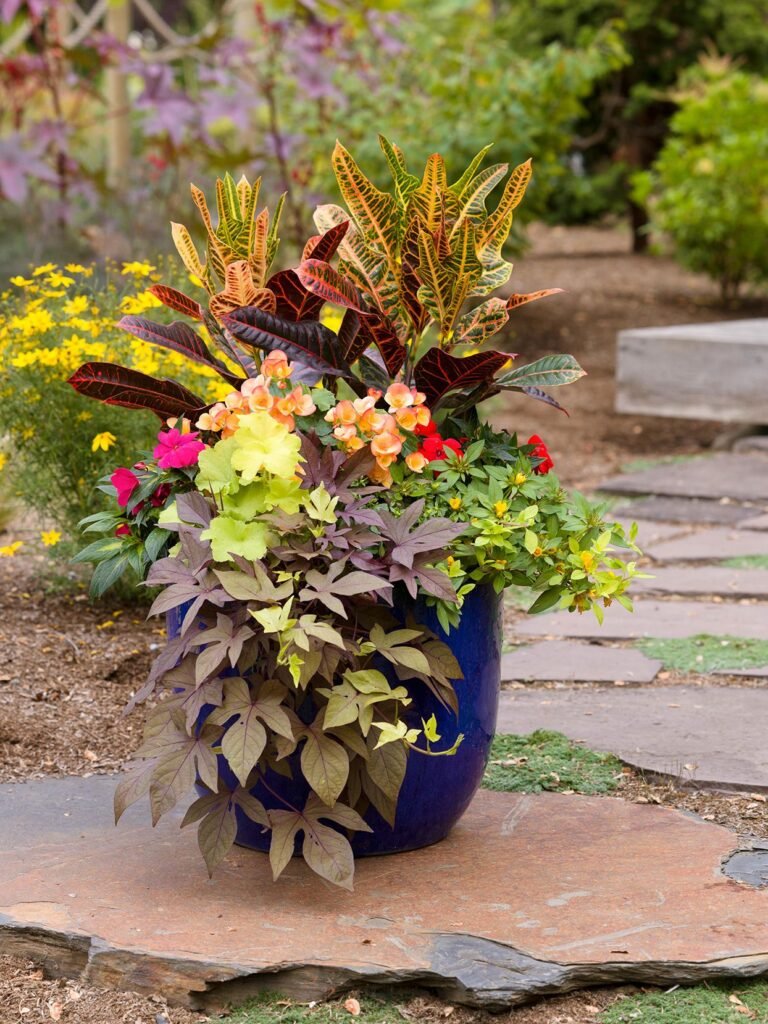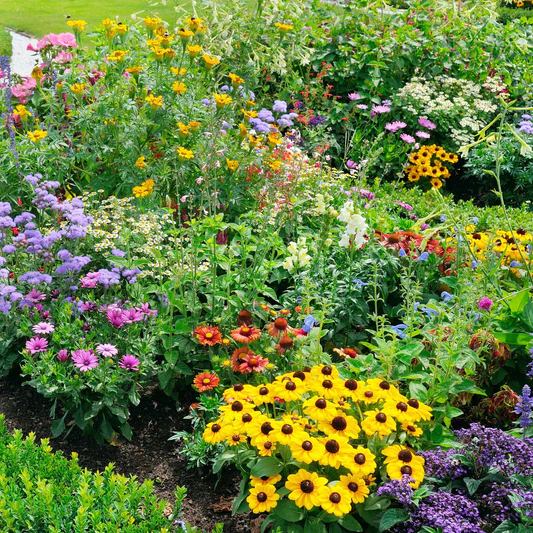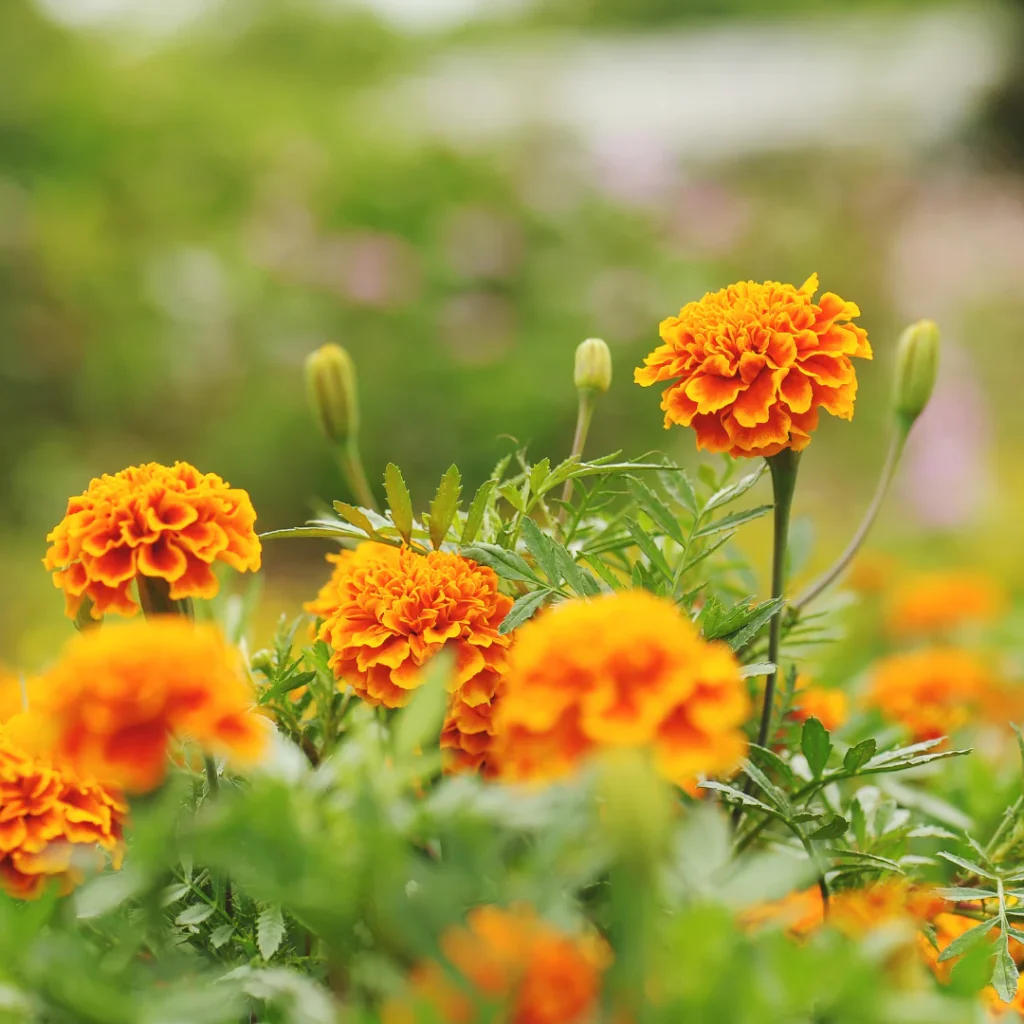Gardening is one of the most rewarding hobbies, but let’s be honest—it can also be time-consuming. Between work, family, and daily responsibilities, not everyone has the luxury of spending hours weeding, pruning, and watering. That’s where low-maintenance perennials come in. Unlike annuals that need replanting every year, perennials return season after season, saving you time, energy, and money while still giving your garden a vibrant, flourishing look.
If you’re a busy gardener looking for beauty without the constant upkeep, here are five of the best low-maintenance perennials to consider. These plants thrive with minimal care, are generally pest-resistant, and can adapt to various growing conditions.
1. Hostas (Hosta spp.)

Why They’re Perfect for Busy Gardeners
Hostas are often called the “backbone of shade gardens,” and for good reason. Once planted, these hardy perennials require very little attention. Their lush foliage comes in a variety of shapes, sizes, and colors—ranging from deep greens to striking variegated patterns—making them a favorite for creating texture and contrast in shady areas.
Growing Conditions
- Light: Partial to full shade.
- Soil: Moist, well-drained soil enriched with organic matter.
- Watering: Requires moderate watering, especially in the first year until established.
Care Tips
- Mulch around hostas to retain soil moisture and discourage weeds.
- Divide clumps every 3–5 years to maintain healthy growth.
- Watch out for slugs and snails, which are their primary pests.
Bonus: Hostas are not just ornamental; some varieties even produce fragrant flowers in the summer, attracting pollinators like hummingbirds.
2. Black-Eyed Susans (Rudbeckia hirta)

Why They’re Perfect for Busy Gardeners
If you want bold color and effortless cheer, black-eyed Susans are a must. Known for their golden-yellow petals and dark centers, these daisy-like flowers bloom profusely from midsummer to early fall. They are highly adaptable, drought-tolerant, and resistant to most pests and diseases, making them an excellent choice for low-maintenance gardening.
Growing Conditions
- Light: Full sun (at least 6 hours daily).
- Soil: Adaptable but thrives in well-drained soil.
- Watering: Moderate, but they can tolerate dry spells once established.
Care Tips
- Deadhead spent flowers to encourage longer blooming.
- Every 3–4 years, divide clumps to prevent overcrowding.
- Leave some seed heads intact in fall—they add winter interest and provide food for birds.
Bonus: Black-eyed Susans are pollinator magnets, attracting butterflies and bees to your yard.
3. Coneflowers (Echinacea spp.)

Why They’re Perfect for Busy Gardeners
Coneflowers are among the toughest perennials you can grow. Known for their daisy-like flowers with raised centers, these plants come in a variety of vibrant colors like purple, pink, white, and orange. They’re drought-resistant, deer-resistant, and can thrive even in poor soil conditions.
Growing Conditions
- Light: Full sun to partial shade.
- Soil: Prefers well-drained soil but is tolerant of rocky or sandy soils.
- Watering: Very drought-tolerant once established.
Care Tips
- Cut back stems in late fall to prepare the plant for winter.
- Allow seed heads to remain for natural reseeding and to provide food for birds.
- Fertilization isn’t necessary, making them extremely low-maintenance.
Bonus: Coneflowers are known for their medicinal properties—Echinacea is widely used to boost immunity and fight colds.
4. Daylilies (Hemerocallis spp.)

Why They’re Perfect for Busy Gardeners
Daylilies are the epitome of low-maintenance beauty. As the name suggests, each bloom lasts only a day, but don’t worry—each plant produces dozens of buds, ensuring a continuous display of vibrant color throughout the summer. They are incredibly hardy and can survive in various soil types, weather conditions, and levels of neglect.
Growing Conditions
- Light: Full sun to partial shade.
- Soil: Well-drained soil, though they tolerate clay and sandy soils.
- Watering: Minimal, except during prolonged dry spells.
Care Tips
- Remove spent flower stalks to encourage more blooms.
- Divide clumps every 3–4 years to maintain vigor.
- Add mulch to suppress weeds and retain soil moisture.
Bonus: Daylilies come in a stunning range of colors, including red, orange, yellow, pink, and even near-purple, offering endless options for your garden design.
5. Sedum (Stonecrop)

Why They’re Perfect for Busy Gardeners
Sedum, often called stonecrop, is one of the most forgiving perennials. These succulent-like plants are ideal for rock gardens, borders, or even containers. Their fleshy leaves retain water, making them incredibly drought-tolerant. In late summer, sedum produces clusters of star-shaped flowers that add charm to your garden while also attracting pollinators.
Growing Conditions
- Light: Full sun is best.
- Soil: Well-drained soil, even sandy or rocky types.
- Watering: Rarely needs watering except in extreme drought.
Care Tips
- Prune in spring to encourage bushier growth.
- Avoid overwatering—sedum prefers to stay on the drier side.
- Divide plants every few years if they outgrow their space.
Bonus: Sedum varieties range from creeping groundcovers to tall border plants, giving you flexibility in your garden design.
Extra Tips for Busy Gardeners Choosing Perennials
- Mulching Matters: Adding mulch reduces weeds, conserves soil moisture, and improves soil health—all of which save you time.
- Group by Needs: Plant perennials with similar water and light requirements together to simplify care.
- Choose Native Plants: Native perennials often require less maintenance since they’re adapted to your local climate and soil.
- Invest in Perennials: While they may cost more upfront than annuals, perennials return year after year, making them more cost-effective in the long run.
- Let Nature Help: Pollinator-friendly plants attract bees, butterflies, and birds, creating a healthier, more balanced garden ecosystem.
Conclusion
If your schedule is packed but you still dream of a flourishing garden, these **five low-maintenance perennials—hostas, black-eyed Susans, coneflowers, daylilies, and sedum—**are the perfect starting point. They’re beautiful, hardy, and require minimal upkeep, making them ideal for busy gardeners who want maximum impact with minimal effort.
By planting these perennials, you’ll create a garden that thrives year after year with little intervention, allowing you to spend more time enjoying your outdoor space and less time working in it.
So, grab your gardening gloves, choose a spot, and start planting—you’ll thank yourself when your garden blooms effortlessly season after season.
